Abstract
Studies were conducted on inhalation pharmacokinetics of 1,3-butadiene and of its primary reactive metabolic intermediate 1,2-epoxybutene-3 in rats (Sprague-Dawley) and mice (B6C3F1). Investigations of inhalation pharmacokinetics of 1,3-butadiene revealed saturation kinetics of 1,3-butadiene metabolism in both species. For rats and mice linear pharmacokinetics apply at exposure concentrations below 1000 ppm 1,3-butadiene; saturation of 1,3-butadiene metabolism is observed at atmospheric concentrations of about 2000 ppm. The estimated maximal metabolic elimination rates were 400 mumole/hr/kg for mice and 200 mumole/hr/kg for rats. This shows that 1,3-butadiene is metabolized by mice at about twice the rate of rats. Investigations of inhalation pharmacokinetics of 1,2-epoxybutene-3 revealed major differences in metabolism of this compound between both species. No indication of saturation kinetics of 1,2-epoxybutene-3 metabolism could be observed in rats up to exposure concentrations of 5000 ppm, whereas in mice the saturation of epoxybutene metabolism became apparent at atmospheric concentrations of about 500 ppm. The estimated maximal metabolic rate for 1,2-epoxybutene-3 was 350 mumole/hr/kg in mice and greater than 2600 mumole/hr/kg in rats. When the animals are exposed to high concentrations of 1,3-butadiene, 1,2-epoxybutene-3 is exhaled by rats and mice. For rats 1,2-epoxybutene-3 concentration in the gas phase of the system reaches a plateau at about 4 ppm. For mice, 1,2-epoxybutene-3 concentration increases with exposure time until, at about 10 ppm, signs of acute toxicity are observed. Under these conditions hepatic nonprotein sulfhydryl compounds are virtually depleted in mice but not in rats.(ABSTRACT TRUNCATED AT 250 WORDS)
Full text
PDF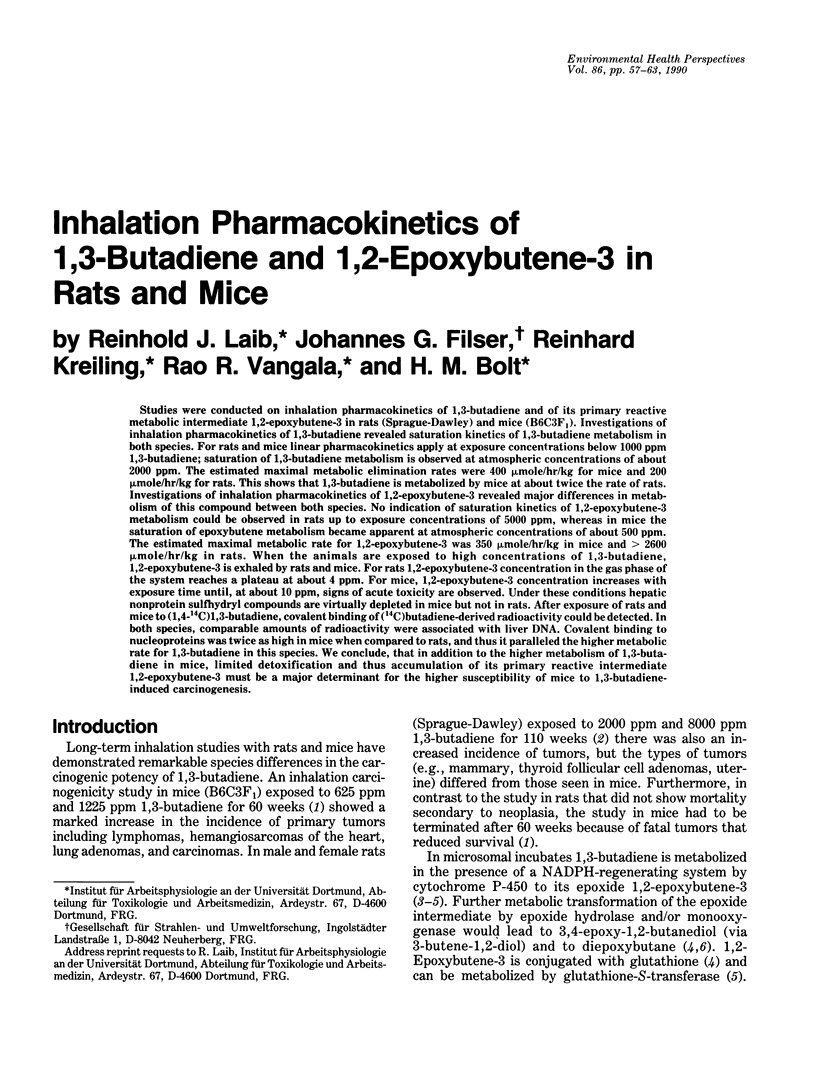
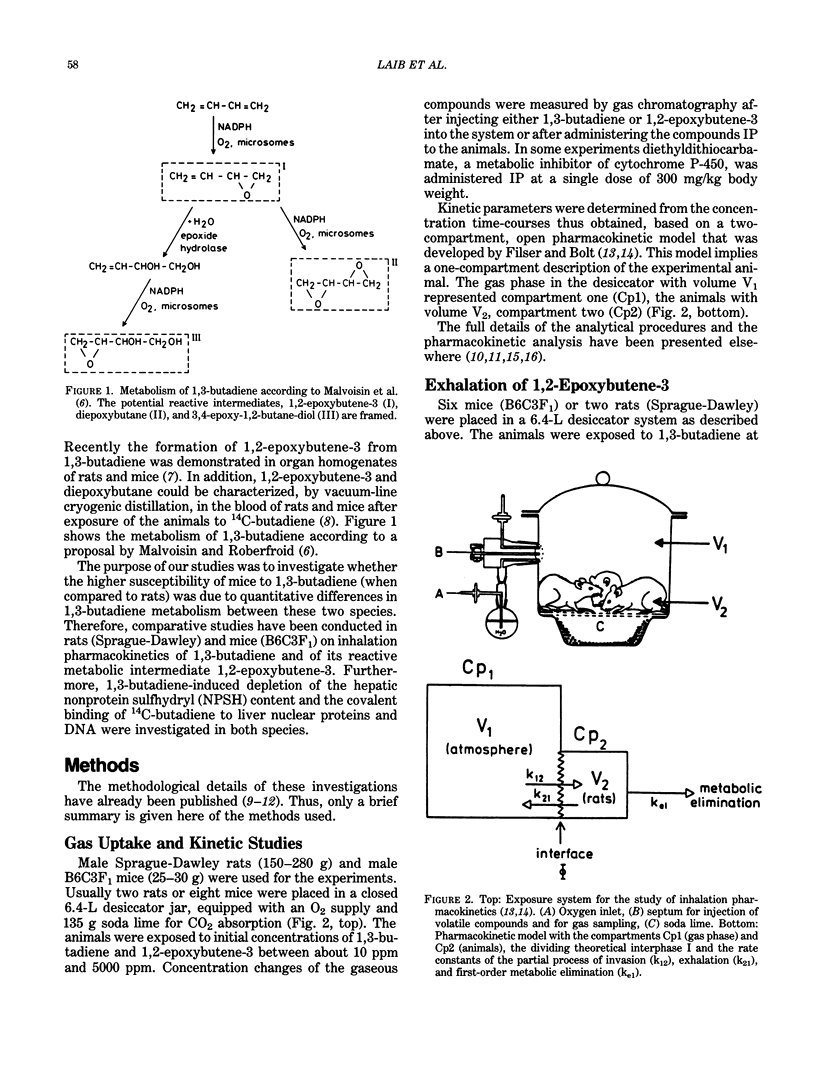
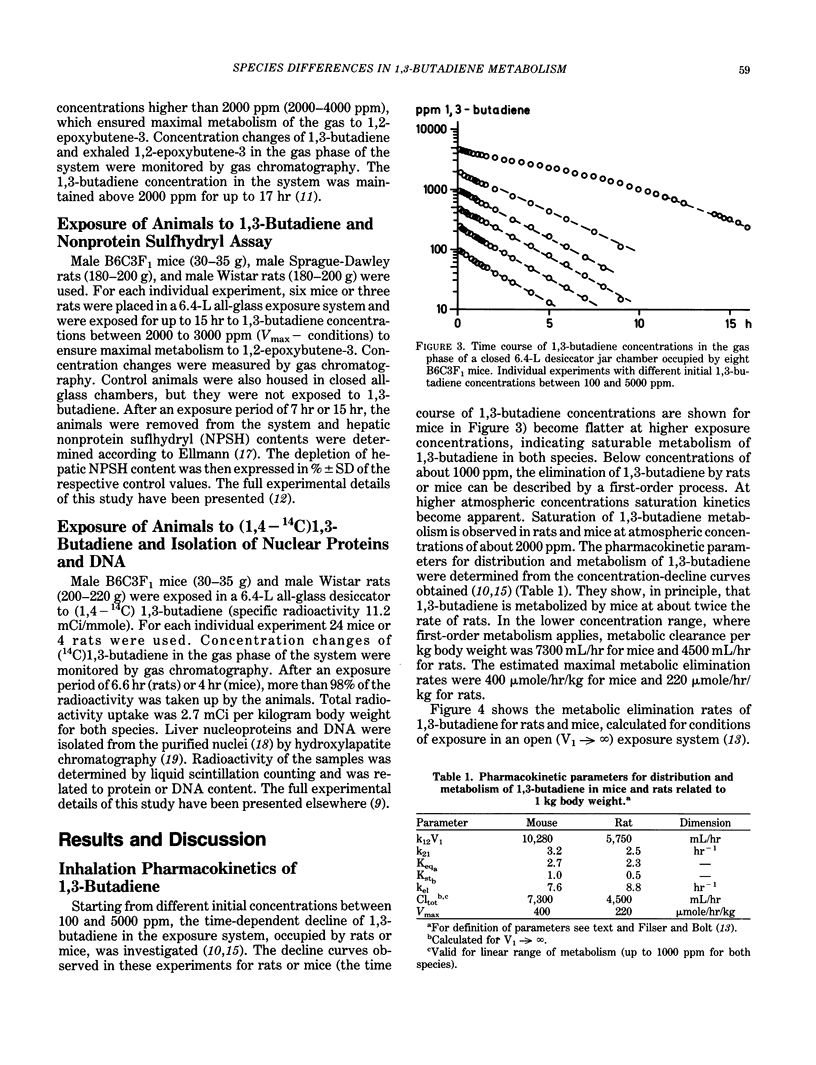
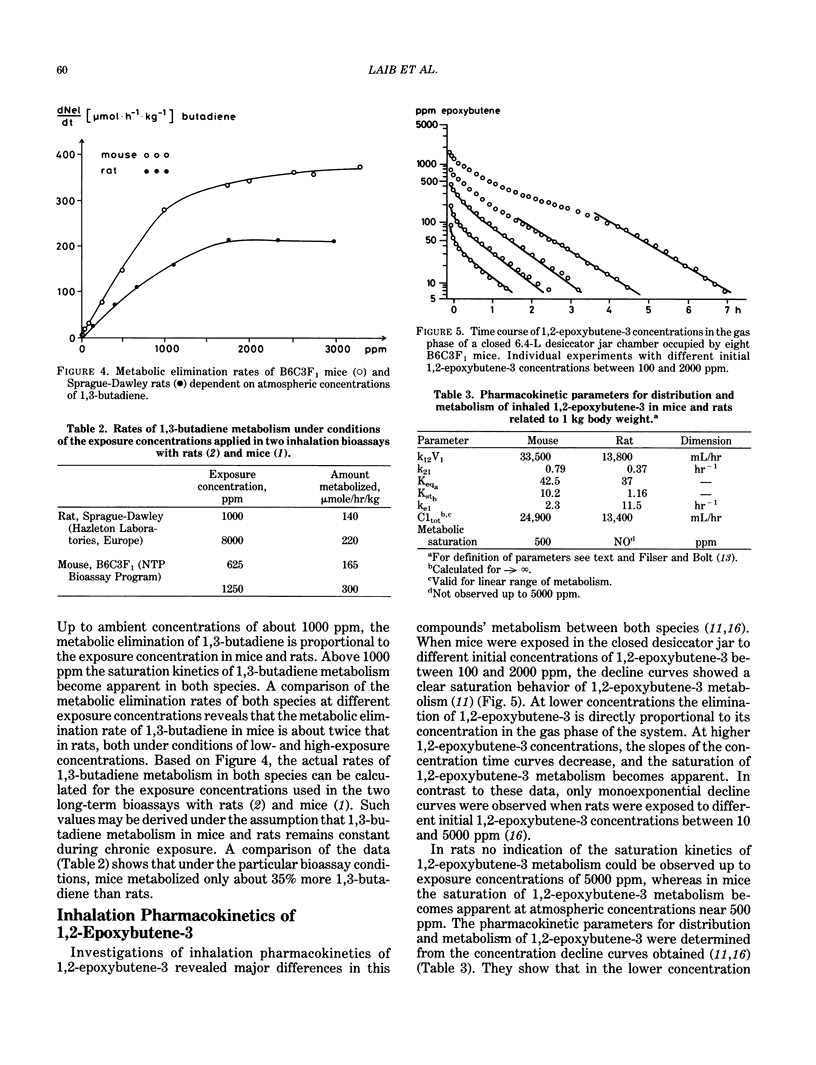
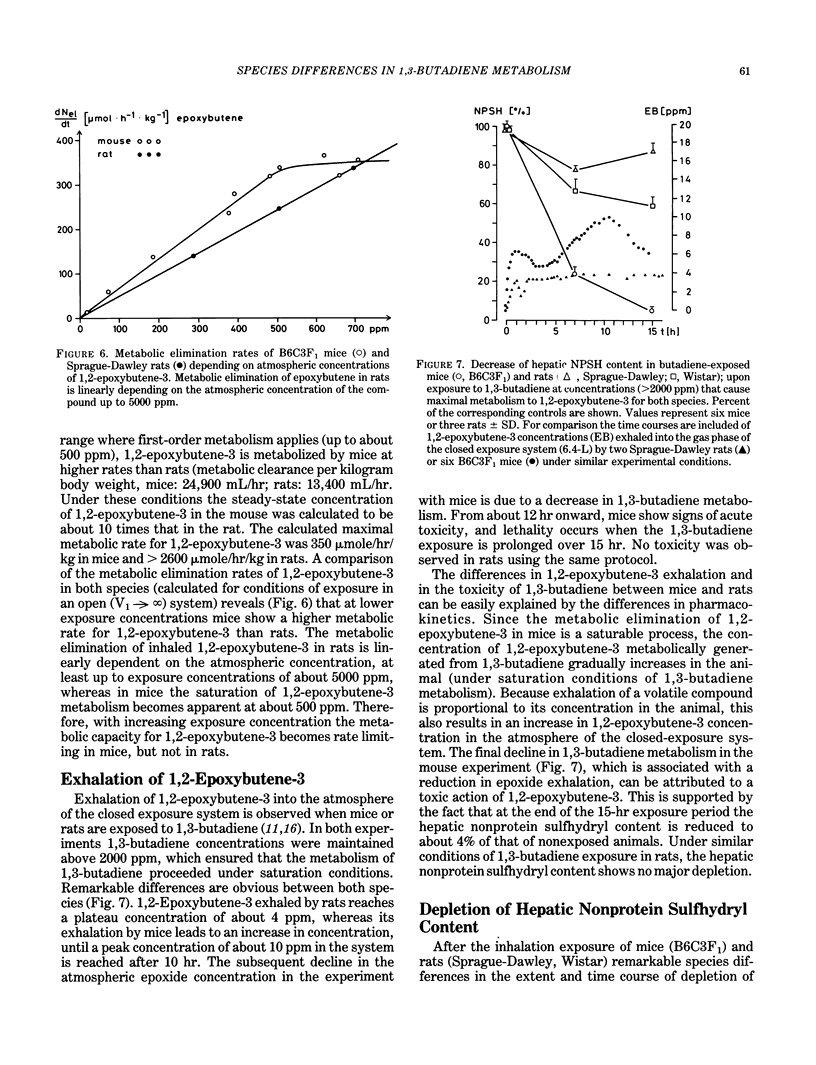
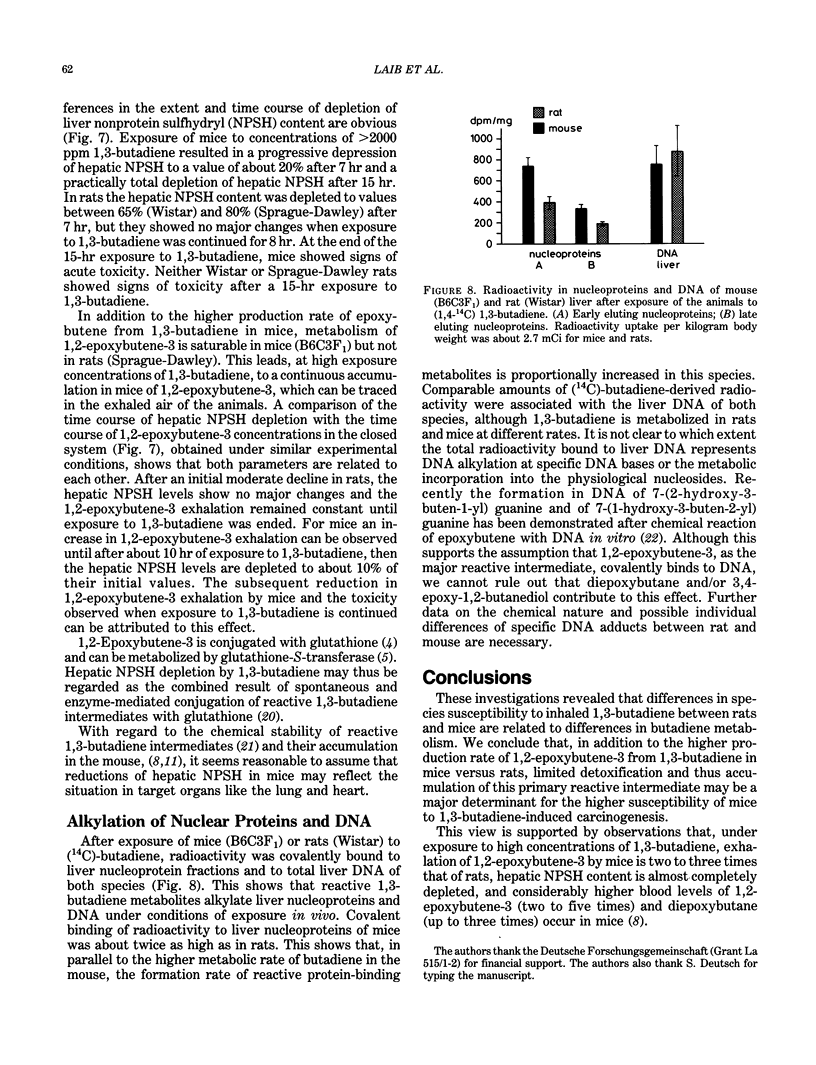
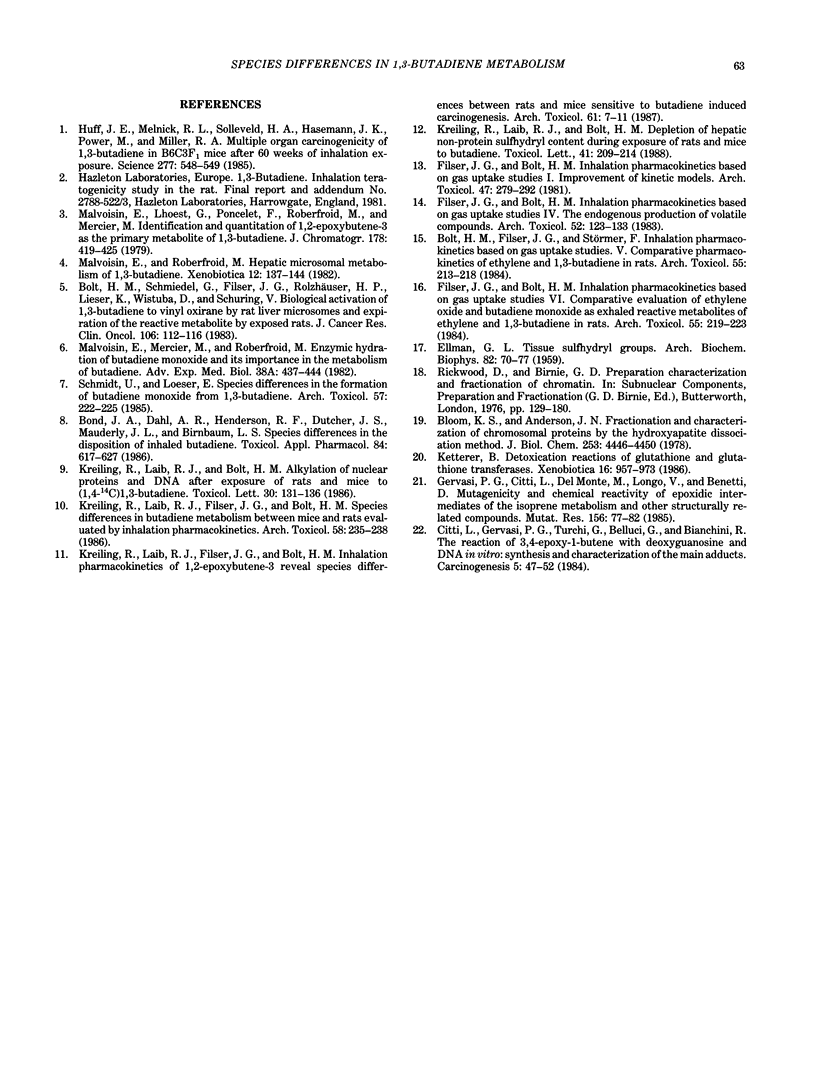
Selected References
These references are in PubMed. This may not be the complete list of references from this article.
- Bloom K. S., Anderson J. N. Fractionation and characterization of chromosomal proteins by the hydroxyapatite dissociation method. J Biol Chem. 1978 Jun 25;253(12):4446–4450. [PubMed] [Google Scholar]
- Bolt H. M., Filser J. G., Störmer F. Inhalation pharmacokinetics based on gas uptake studies. V. Comparative pharmacokinetics of ethylene and 1,3-butadiene in rats. Arch Toxicol. 1984 Oct;55(4):213–218. doi: 10.1007/BF00341013. [DOI] [PubMed] [Google Scholar]
- Bolt H. M., Schmiedel G., Filser J. G., Rolzhäuser H. P., Lieser K., Wistuba D., Schurig V. Biological activation of 1,3-butadiene to vinyl oxirane by rat liver microsomes and expiration of the reactive metabolite by exposed rats. J Cancer Res Clin Oncol. 1983;106(2):112–116. doi: 10.1007/BF00395388. [DOI] [PubMed] [Google Scholar]
- Bond J. A., Dahl A. R., Henderson R. F., Dutcher J. S., Mauderly J. L., Birnbaum L. S. Species differences in the disposition of inhaled butadiene. Toxicol Appl Pharmacol. 1986 Jul;84(3):617–627. doi: 10.1016/0041-008x(86)90268-1. [DOI] [PubMed] [Google Scholar]
- Citti L., Gervasi P. G., Turchi G., Bellucci G., Bianchini R. The reaction of 3,4-epoxy-1-butene with deoxyguanosine and DNA in vitro: synthesis and characterization of the main adducts. Carcinogenesis. 1984 Jan;5(1):47–52. doi: 10.1093/carcin/5.1.47. [DOI] [PubMed] [Google Scholar]
- ELLMAN G. L. Tissue sulfhydryl groups. Arch Biochem Biophys. 1959 May;82(1):70–77. doi: 10.1016/0003-9861(59)90090-6. [DOI] [PubMed] [Google Scholar]
- Filser J. G., Bolt H. M. Inhalation pharmacokinetics based on gas uptake studies. I. Improvement of kinetic models. Arch Toxicol. 1981 Jul;47(4):279–292. doi: 10.1007/BF00332394. [DOI] [PubMed] [Google Scholar]
- Filser J. G., Bolt H. M. Inhalation pharmacokinetics based on gas uptake studies. IV. The endogenous production of volatile compounds. Arch Toxicol. 1983 Feb;52(2):123–133. doi: 10.1007/BF00354772. [DOI] [PubMed] [Google Scholar]
- Filser J. G., Bolt H. M. Inhalation pharmacokinetics based on gas uptake studies. VI. Comparative evaluation of ethylene oxide and butadiene monoxide as exhaled reactive metabolites of ethylene and 1,3-butadiene in rats. Arch Toxicol. 1984 Oct;55(4):219–223. doi: 10.1007/BF00341014. [DOI] [PubMed] [Google Scholar]
- Gervasi P. G., Citti L., Del Monte M., Longo V., Benetti D. Mutagenicity and chemical reactivity of epoxidic intermediates of the isoprene metabolism and other structurally related compounds. Mutat Res. 1985 Apr-May;156(1-2):77–82. doi: 10.1016/0165-1218(85)90009-6. [DOI] [PubMed] [Google Scholar]
- Huff J. E., Melnick R. L., Solleveld H. A., Haseman J. K., Powers M., Miller R. A. Multiple organ carcinogenicity of 1,3-butadiene in B6C3F1 mice after 60 weeks of inhalation exposure. Science. 1985 Feb 1;227(4686):548–549. doi: 10.1126/science.3966163. [DOI] [PubMed] [Google Scholar]
- Ketterer B. Detoxication reactions of glutathione and glutathione transferases. Xenobiotica. 1986 Oct-Nov;16(10-11):957–973. doi: 10.3109/00498258609038976. [DOI] [PubMed] [Google Scholar]
- Kreiling R., Laib R. J., Bolt H. M. Alkylation of nuclear proteins and DNA after exposure of rats and mice to [1,4-14C]1,3-butadiene. Toxicol Lett. 1986 Feb;30(2):131–136. doi: 10.1016/0378-4274(86)90095-0. [DOI] [PubMed] [Google Scholar]
- Kreiling R., Laib R. J., Bolt H. M. Depletion of hepatic non-protein sulfhydryl content during exposure of rats and mice to butadiene. Toxicol Lett. 1988 Jun;41(3):209–214. doi: 10.1016/0378-4274(88)90056-2. [DOI] [PubMed] [Google Scholar]
- Kreiling R., Laib R. J., Filser J. G., Bolt H. M. Inhalation pharmacokinetics of 1,2-epoxybutene-3 reveal species differences between rats and mice sensitive to butadiene-induced carcinogenesis. Arch Toxicol. 1987;61(1):7–11. doi: 10.1007/BF00324541. [DOI] [PubMed] [Google Scholar]
- Kreiling R., Laib R. J., Filser J. G., Bolt H. M. Species differences in butadiene metabolism between mice and rats evaluated by inhalation pharmacokinetics. Arch Toxicol. 1986 Apr;58(4):235–238. doi: 10.1007/BF00297112. [DOI] [PubMed] [Google Scholar]
- Malvoisin E., Roberfroid M. Hepatic microsomal metabolism of 1,3-butadiene. Xenobiotica. 1982 Feb;12(2):137–144. doi: 10.3109/00498258209046787. [DOI] [PubMed] [Google Scholar]
- Schmidt U., Loeser E. Species differences in the formation of butadiene monoxide from 1,3-butadiene. Arch Toxicol. 1985 Sep;57(4):222–225. doi: 10.1007/BF00324781. [DOI] [PubMed] [Google Scholar]


